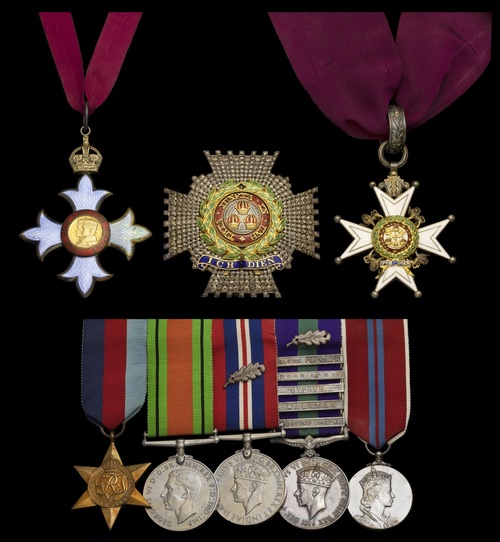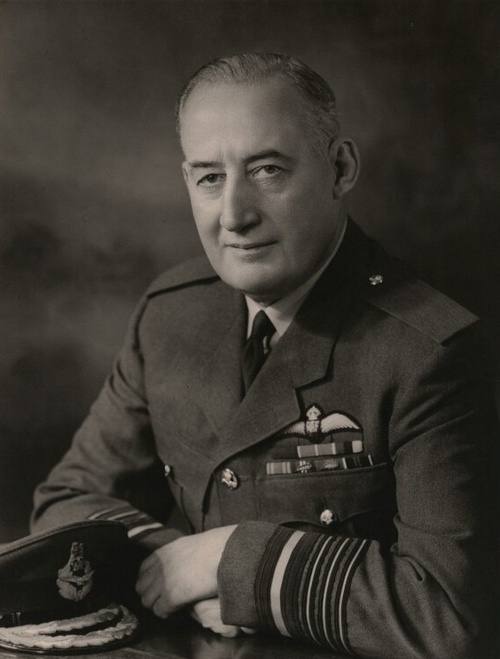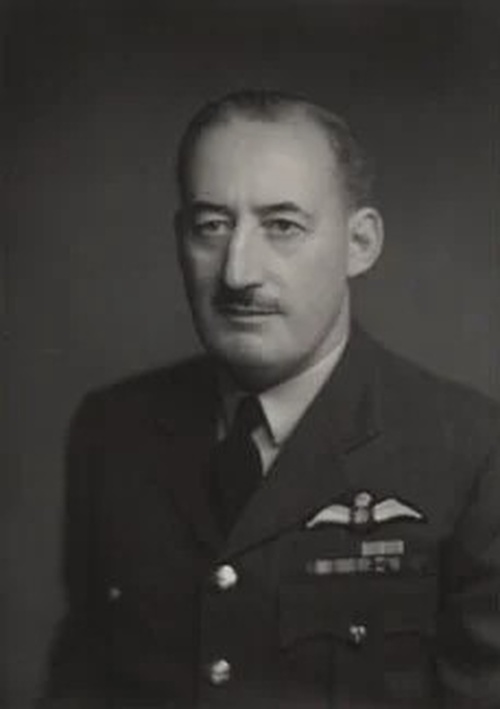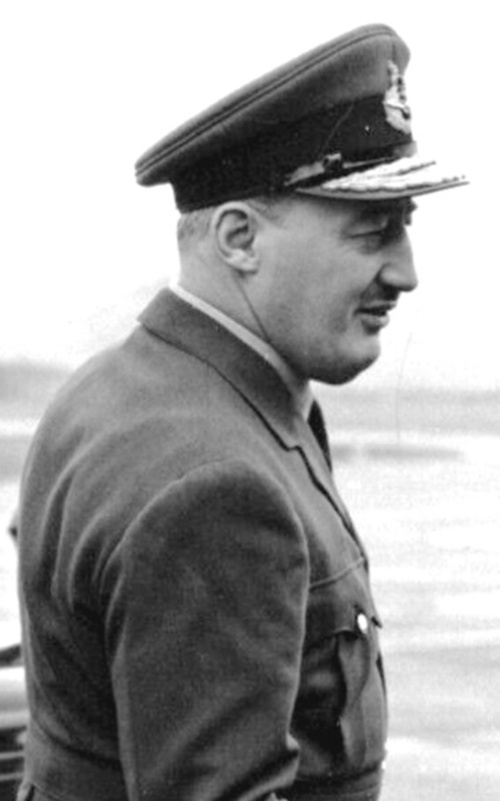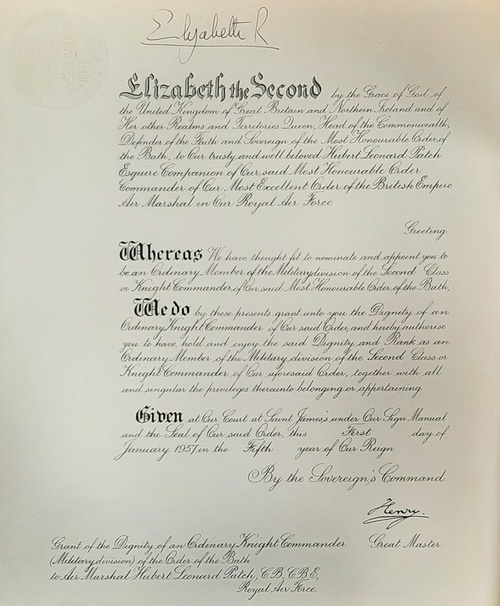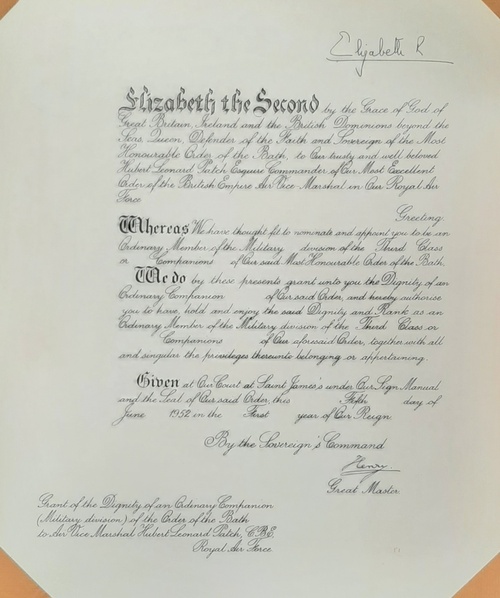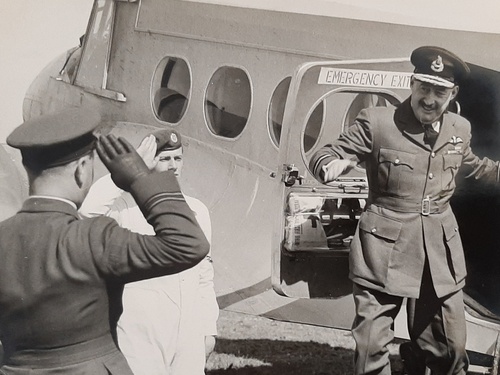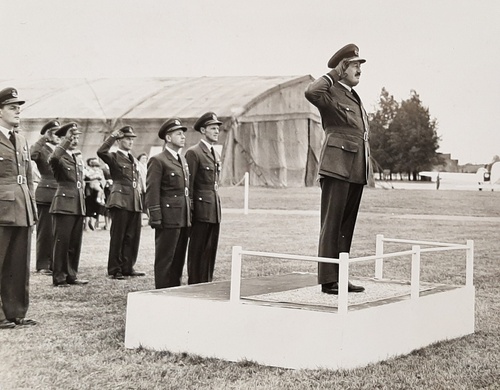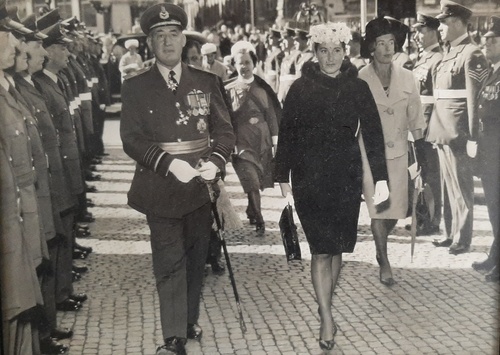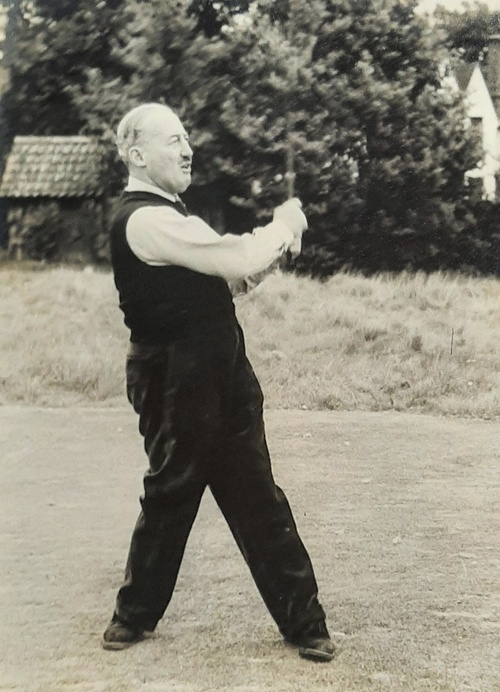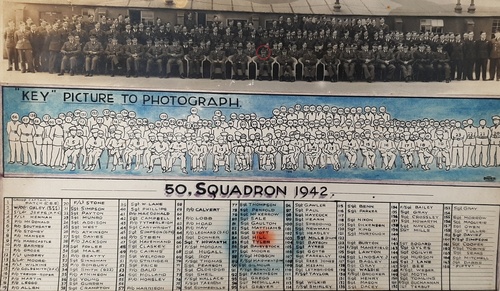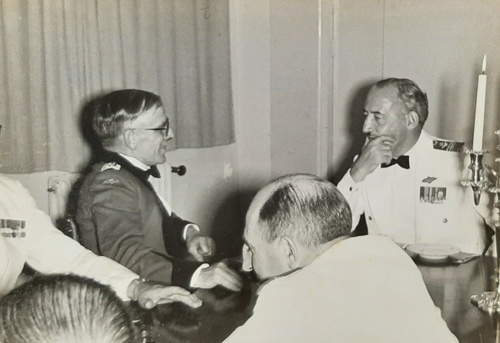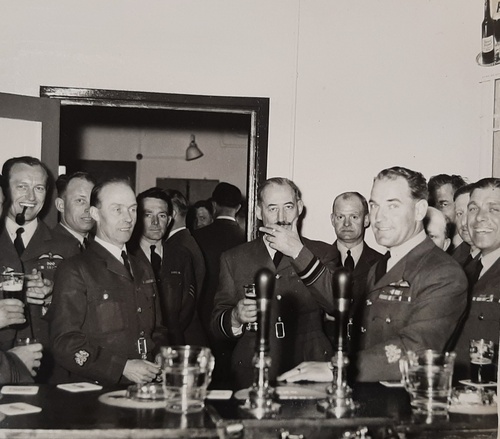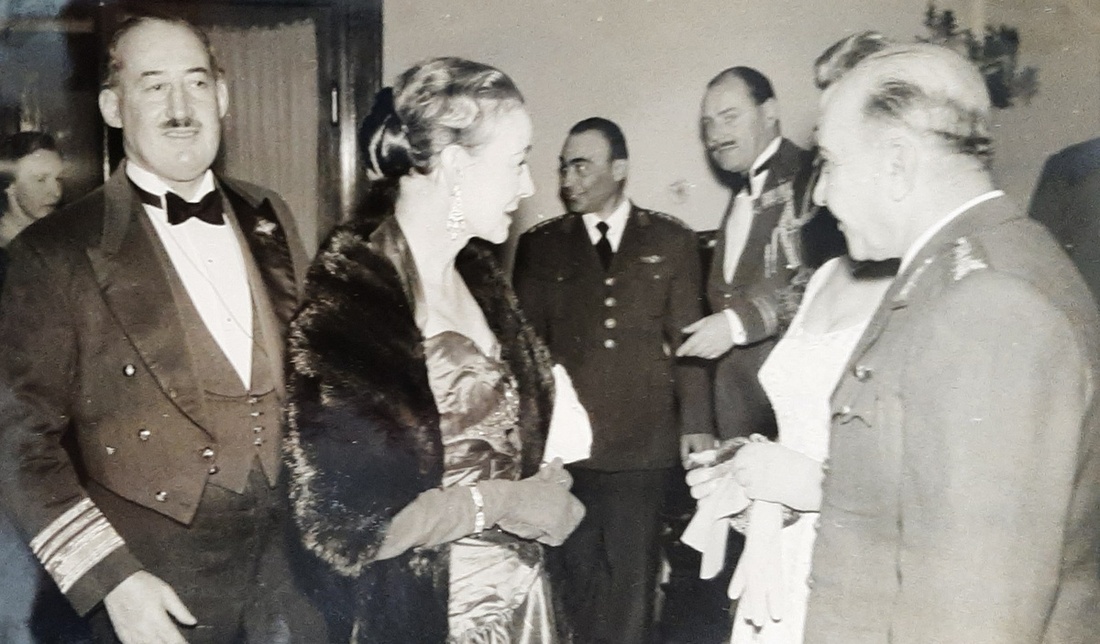Auction: 24003 - Orders, Decorations and Medals
Lot: 204
Sold by Order of a Direct Descendant
The superb and well-documented '1957' K.C.B., '1942' C.B.E. group of seven awarded to Air Chief Marshal Sir H. L. Patch, Royal Air Force, who was four times 'mentioned' during the Second World War
The Most Honourable Order of the Bath, Military Division, Knight Commander's (K.C.B.) set of insignia, comprising neck Badge, silver-gilt and enamel; breast Star, silver, silver-giltand enamel, in its Central Chancery box of issue; The Most Excellent Order of the British Empire, 2nd Type, Military Division, Commander's (C.B.E.) neck Badge, silver-gilt and enamel, in its Garrard & Co. case of issue; 1939-45 Star; Defence and War Medals 1939-45, with M.I.D. oak leaf; General Service Medal 1918-62, 5 clasps, Palestine 1945-48, Malaya, Cyprus, Near East, Arabian Peninsula, with M.I.D. oak leaf (A.V.M. H. L. Patch. R.A.F.); Coronation 1953, mounted as worn where applicable, slight enamel wear to first, enamel cracked to left hand ray of second, minor contact marks over campaign awards, overall very fine (7)
K.C.B. London Gazette 1 January 1957.
C.B.E. London Gazette 11 June 1942.
Hubert Leonard Patch, nicknamed 'Sam' was born Freshwater, Isle of Wight on 16 December 1904 the son of Leonard and Fanny Patch of 76 St Andrew's Road, Southsea, Portsmouth. His father was a member of the Royal Navy who retired in 1912 returning for Great War service and finishing his career as a Captain.
Early Commands
Entering the R.A.F. College, Cranwell on 12 September 1923 with 'A' Squadron as a Cadet going on to represent the College at Cricket, Hockey and Rugby, being promoted Flight Cadet Corporal prior to graduating two years later. Appointed Pilot Officer with No. 58 Squadron on 30 July 1925, this was a bomber squadron, equipped with the Vickers Vimy heavy bomber. He was still serving there on 12 April 1927 when he was promoted Flying Officer and the next year was appointed Armaments Officer with the No. 45 Squadron on 30 March 1928, a mixed bomber and transport formation.
He was to serve in the Armaments role until the Second World War, being advanced Flight Lieutenant on 11 March 1931. Appointed Armaments Officer at RAF Bircham Newton, Norfolk on 9 April 1931, historically a bomber base. Patch was later attached to No. 35 Squadron as Officer Commanding 'C' Flight on 8 May 1933, a role he held until June. Later he was posted as Flight Commander, No. 12 Squadron at Andover on 5 March 1935.
Advanced Squadron Leader on 1 April 1937 and he was posted to No. 6 Armament Training Station, Warmwell in July of that year. Patch entered the Second World War as Armament Officer of Headquarters Bomber Command, a role he took up on 19 December 1938.
Second World War
Wing Commander on 1 March 1940 he was 'mentioned' for his work three times whilst in his role with Bomber Command (London Gazette 1 January 1941, 24 September 1941, 1 January 1942). Patch was appointed Officer Commanding at RAF Swinderby on 25 May 1942 as the site played host to No. 300 (Polish) Bomber Squadron. His new appointment was solidified with a promotion to Group Captain on 1 June 1942.
Transferred to be Officer Commanding, RAF Coningsby on 6 February 1943, as it was undergoing renovations. The first Squadron to be stationed there after it reopened were No. 617 (Dambusters) Squadron, from there Operation Garlic was launched in September, which ended in disaster and saw three of the original Dambusters killed.
Advanced Acting Air Commadore on 7 December 1943 Patch was promoted appointed Director of Armament Requirements in January 1944. He was further 'mentioned' on 14 January 1944 and promoted Group Captain on 7 June 1944.
Post-War
Remaining in his role until 1946 he was then appointed Air Officer Commanding in No 44 (Transport) Group on 8 February. He commanded this formation until July 1946, the month before they were absorbed into No. 46 Group, Patch was transferred to Air Staff, Air Traffic Control, Headquarters Fighter Command in July 1946. His last command prior to taking up a senior office was the role of Commandant of the Aeroplane & Armament Experimental Establishment which he was appointed to in July 1948.
Attending a course at Imperial Defence College in 1950 he was advanced Acting Air Vice-Marshal on 21 January 1951 while performing the role of Air Officer in Command of Administration, Far East Air Force. Not long afterwards he was confirmed in the role on Air Vice-Marshal on 1 July.
Promoted Senior Air Staff Officer, Far East Air Force on 6 August 1952, he undertook this role the Malayan Emergency was ongoing. Serving there for a little over a year he was later appointed Air Officer Commanding, No. 11 Group in Britain on 1 November 1953.
Appointed Air Officer Command in Chief of Fighter Command he was again given the Acting rank of Air Marshal while serving in that role on 1 January 1956. This was during a difficult time for the Royal Air Force with an ongoing defence spending review which would see a budget cut the next year. Perhaps due to this Patch was soon moved from the role as Commander in Chief of the Middle East Air Force on 24 September 1956.
Patch was in this role two years later when the Suez Crisis arose, and Operation Musketeer was planned. Despite his position as Commander in Chief of the Middle East Air Force he was not given command of the Royal Air Force assets, rather giving it to Air Vice Marshal Denis Barnett. He did however have responsibility for his own command as well as the air defence of the British bases in Cyprus. This is not to say he did not have a role however and was certainly kept abreast of Operations as The Quiet Australian, the biography of Air Chief Marshal Teddy Hudleston makes clear, stating:
'Teddy arrived in Nicosia at 6.30 am on Sunday 28 October and was briefing Air Marshal Hubert ('Sam') Patch by 8 am. The clarity was that Cordage was to be abandoned in favour of Musketeer. Teddy's role was that of sensitive selection of those targets which would defeat the Egyptians without too great a loss of life. His first task, though, would be arial reconnaissance over Cairo.'
Responsibility for Cyprus involved Patch in the Cyprus Emergency, an ongoing guerilla conflict. Further promoted Air Marshal on 1 January 1957, that same year he became the first British Air Marshal to visit Iran, where he was greeted by the Shah, personally. From there he was briefly appointed Air Member for Personnel on 1 April 1959, being advanced Air Chief Marshal the same day.
His last operational command was as Commander of the British Forces Arabian Peninsula on 19 September 1959. During this period the Royal Air Force were still deployed in Oman, supporting local forces and British Special Forces. Patch finally retired on 29 May 1961 in that time he was the BAC Representative to NATO Countries until 1963.
He retired to Marbella, Andalucia where he died on 18 November 1987.
Sold together with copied research and a comprehensive archive comprising:
i)
The recipient's evening dress uniform; jacket, waistcoat, dress trousers and dress gloves.
ii)
Assorted Badges, patches and buttons.
iii)
A copy of Morning Flight by Peter Scott, (note this book relates to duck flighting not aviation).
iv)
A boxed reel of film labelled 'Officer Commanding No. 114 Maintenance Unit'.
v)
Two boxed commemorative medals, unnamed.
vi)
Two framed photographs of the recipient and one unframed group photograph of the recipient as part of No. 50 Squadron.
vii)
Assorted documents including passports named to Air Chief Marshall Sir H. L. Patch. KCN. CBE' and 'Lady Patch', driving licenses, letters and other documentation from various postings.
viii)
Three travel suitcases, all with labels marked Air Marshall Sir. H. L. Patch.
ix)
A pair of Field Binoculars in a case labelled to 'Air Chief Marshall Sir. Hubert Patch'.
x)
Several hand drawn cartoons of the recipient.
xi)
Two award documents appointing the recipient to the Order of the Bath and a document of Commission appoint him Pilot Officer.
xii)
Several photograph albums containing pictures from the recipient's career and family life as well as a guestbook from his time in the Middle East.
For his miniature dress Medals, please see Lot 307.
Subject to 20% VAT on Buyer’s Premium. For more information please view Terms and Conditions for Buyers.
Sold for
£3,500
Starting price
£2500

